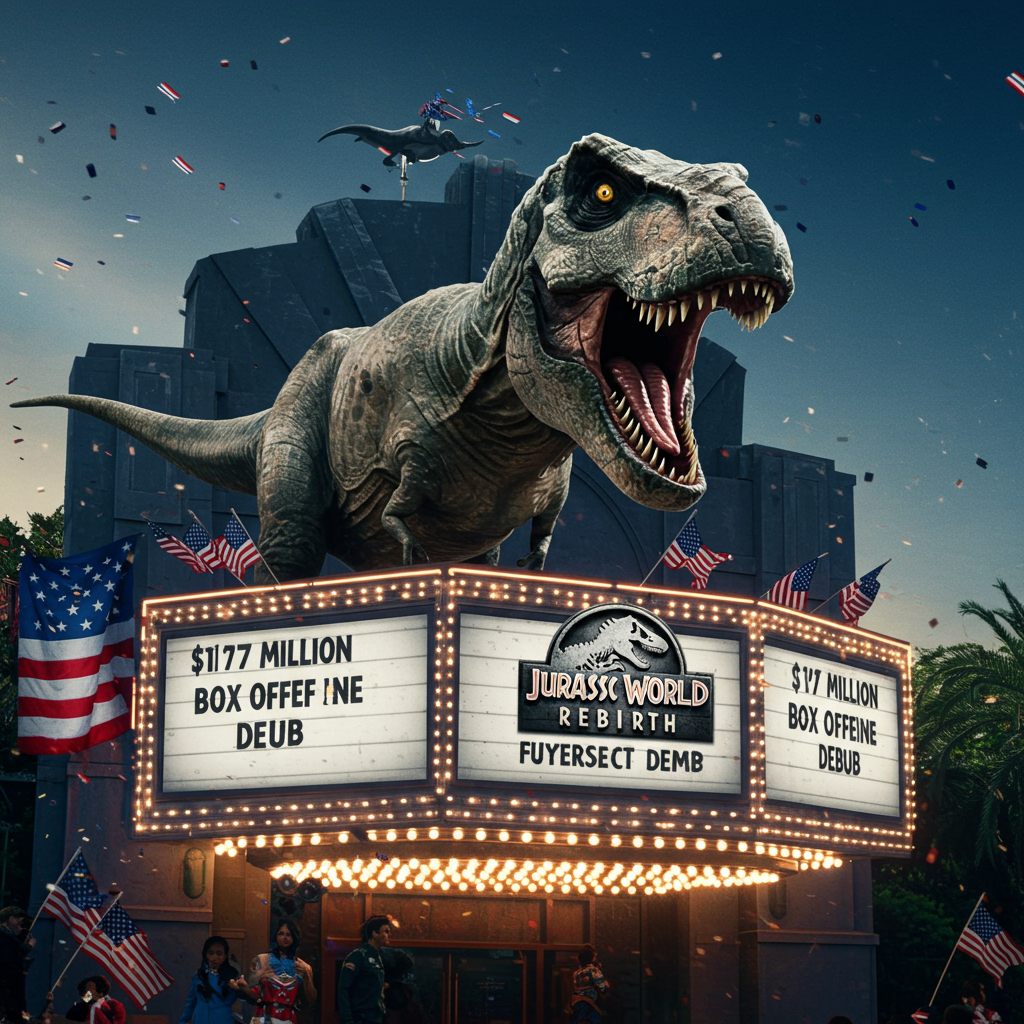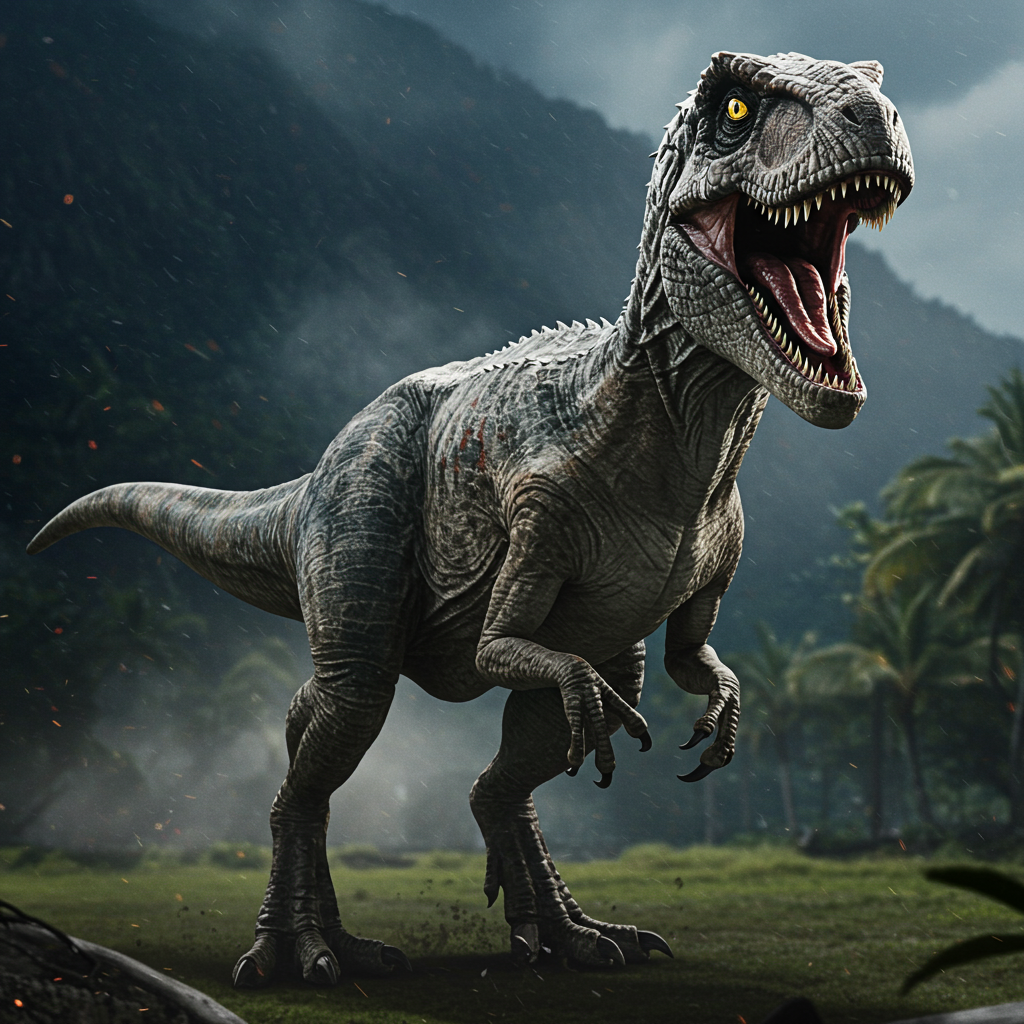Dinosaurs once again dominated the silver screen, with Universal Pictures’ “jurassic world Rebirth” roaring to a significant box office debut over the extended July Fourth holiday weekend in 2025. The highly anticipated seventh film in the long-running prehistoric saga stomped its way to an impressive $147.3 million across its first five days in North American theaters. Launching on Wednesday to capture the Independence Day crowds, the movie played in 4,308 locations, securing the top spot on domestic charts and positioning itself as a major summer contender.
This robust opening haul immediately places “Rebirth” among the year’s top performers. The five-day total includes a strong $91.5 million earned over the traditional Friday-to-Sunday weekend period. However, looking at the recent history of the “Jurassic World” trilogy, these figures mark a notable shift.
Comparing “Rebirth” to Past “Jurassic” Openings
While $147.3 million is a substantial sum, it represents a downward trend compared to the immediate predecessors in the 32-year-old franchise. For perspective, the 2015 reboot, “Jurassic World,” exploded onto the scene with a massive $208 million over its opening three days and had accumulated $258 million after five days. Its sequels also posted stronger starts: 2018’s “Jurassic World: Fallen Kingdom” debuted with $148 million in three days ($181 million after five), and 2022’s “Jurassic World Dominion” opened to $145 million in three days ($172 million after five).
This decline in domestic opening performance signals that even a beloved property like “Jurassic” may be experiencing some “wear and tear” typical of long-running film series. Despite the softer domestic start relative to the previous trilogy, Universal adopted a strategic approach regarding the film’s budget.
Smart Budgeting Aims for Profitability
“Jurassic World Rebirth,” which resets the narrative with a new cast including Scarlett Johansson, Jonathan Bailey, and Mahershala Ali, was produced for an estimated $180 million. This is significantly less than the roughly $250 million cost of the prior “Jurassic World” installments. While the original trilogy films all surpassed the coveted billion-dollar mark globally, “Rebirth” does not necessarily need to reach that benchmark to be profitable, thanks to its lower production cost.
However, Universal harbors ambitions for “Rebirth” to spawn a brand new trilogy. Achieving this long-term goal requires sustained interest and strong box office performance beyond the opening weekend to justify the continued investment in the franchise. Promotional partners like Jeep, Dr. Pepper, Quaker, M&Ms, and 7-Eleven also provided an estimated $150 million in media value, significantly boosting the film’s visibility without directly impacting the production budget.
Global Reach Remains a Franchise Strength
A major asset for the “Jurassic” series has consistently been its international appeal, and “Rebirth” proved this holds true. The film roared to a massive $171 million from 82 overseas markets in its opening weekend. This robust international performance contributed significantly to a global opening weekend total of $318.3 million. This global debut is the second-best launch for the “Jurassic” franchise, trailing only the record-breaking $525.5 million opening of the original “Jurassic World.” It also surpassed “Fallen Kingdom’s” $298.9 million global start.
Industry experts like David A. Gross of FranchiseRe highlight that “dinosaur action is understood in all languages and across all cultures,” explaining the series’ consistent strength abroad. China, in particular, delivered a strong $41.5 million opening, making it the year’s biggest Hollywood launch in that territory so far. Other top international markets included the U.K. ($16.6 million) and Mexico ($14 million).
Reception and Audience Insights
Directed by Gareth Edwards, known for “Rogue One” and “Godzilla,” and penned by original “Jurassic Park” screenwriter David Koepp, “Jurassic World Rebirth” centers on a top-secret mission involving searching for dinosaurs whose DNA could lead to a groundbreaking wonder drug. Reception from critics and audiences was reported as kinder compared to the reviews for the previous trilogy starring Chris Pratt and Bryce Dallas Howard. The film received a “meh” B CinemaScore. Historically, however, reviews have not been the primary driver for the box office success of “Jurassic” sequels; the appeal of seeing dinosaurs on the big screen remains paramount.
Universal’s president of domestic distribution, Jim Orr, expressed confidence, calling “Rebirth” a “perfect summer blockbuster” and citing strong word of mouth that could contribute to a healthy run throughout the summer. The audience demographics provided valuable insights. While families (parents and kids) still made up a significant 41% of moviegoers, the audience for “Rebirth” skewed slightly older than previous installments, with only 36% under 25 compared to 56% for “Fallen Kingdom.” The broader 18-34 age group saw a wider turnout at 51%, up from “Dominion’s” 46%. The audience was predominantly male (61%), with the largest single demo being 25-34-year-olds at 29%. Latino and Hispanic moviegoers showed strong turnout, accounting for 26% of the audience.
Premium Large Format (PLF) screens were a significant draw, driving 29% of ticket sales. Dolby Cinemas, in particular, had a strong showing, contributing nearly $8 million over five days and posting a notably higher per-screen average than other PLF options. Ticket-buying behavior indicated that 58% purchased tickets on the same day, similar to “Dominion,” but “Rebirth” saw better presales in the week leading up to release. The primary reasons cited for seeing the film were love for the franchise (51%) and interest in the new cast (22%). In-theater trailers were the most influential marketing tool for moviegoers. Looking ahead, 53% of surveyed audiences expressed interest in seeing a sequel, with another 33% open to the idea depending on their interest.
Box Office Competition and Overall Market Health
“Jurassic World Rebirth” largely faced competition from holdover titles during its opening weekend, as it was the only major new release. Brad Pitt’s racing thriller “F1” secured a distant second place, adding $26.1 million from 3,732 venues in its second weekend. This brought its North American total to $109 million and its global haul to $293.6 million after 10 days. “F1” notably became Apple’s highest-grossing theatrical film to date, surpassing Ridley Scott’s “Napoleon.” Despite a reported $250 million production cost requiring significant box office returns, its international success is a positive sign, and a sequel seems likely given its performance.
Third place went to the live-action “How to Train Your Dragon” remake from Universal’s DreamWorks Animation. It added $9.7 million from 3,714 screens in its fourth weekend, pushing its domestic total to $224 million and its global gross past the $500 million mark ($516 million). Its domestic performance makes it the highest-grossing entry in the “How to Train Your Dragon” franchise, ensuring a sequel is imminent.
Pixar’s “Elio” continued to struggle in its third weekend, taking the fourth spot with a modest $4.9 million. Against a reported $150 million budget, its current totals of $54 million domestically and $96 million globally position it as one of Pixar’s lowest-grossing films ever, despite solid reviews. Rounding out the top five was Danny Boyle’s “28 Years Later,” which earned $4.6 million in its third weekend, bringing its domestic total to $59 million and global total to $125.8 million against a $60 million budget. This result is considered mixed for the planned trilogy starter. Other films noted included the “M3GAN 2.0” sequel, which saw a significant second-weekend drop, and “Mission: Impossible – The Final Reckoning,” which is expected to underperform domestically relative to its budget.
In brighter news, Disney’s live-action “Lilo & Stitch” remake was highlighted for reaching $972 million globally, including a huge $408 million in North America. It remains poised to become the first billion-dollar blockbuster of 2025, with a sequel already in development.
Overall, the strong holiday weekend saw box office returns running 14% ahead of the same point in 2024. However, the industry is still stubbornly more than 25% behind the pre-pandemic benchmark of 2019. Comscore senior analyst Paul Dergarabedian noted that despite the variable timing of the July Fourth holiday, this frame was one of the better Independence Day weekends for cinemas, thanks to the combination of films in the marketplace. Anticipation remains high for upcoming potential heavy hitters later in July, including “Superman” and “Fantastic Four: The First Steps.”
Frequently Asked Questions
How much did ‘Jurassic World Rebirth’ make during its opening weekend?
“Jurassic World Rebirth” earned a total of $147.3 million over its five-day opening weekend (Wednesday through Sunday) in North American theaters. This figure includes $91.5 million from the traditional Friday-to-Sunday period. Globally, the film debuted to $318.3 million, including $171 million from international markets.
Is ‘Jurassic World Rebirth’ considered a box office success compared to past movies?
Yes, it’s considered a box office success, especially given its lower $180 million production budget compared to the previous trilogy’s $250 million costs. While its domestic opening figures were lower than the prior “Jurassic World” films, its strong global performance and reduced budget make it easier to reach profitability. Universal hopes its performance warrants launching a new trilogy.
What other films performed well during the same weekend as ‘Jurassic World Rebirth’?
Several holdover films performed well. Brad Pitt’s racing movie “F1” took second place, reaching $293.6 million globally and becoming Apple’s highest-grossing theatrical release. The live-action “How to Train Your Dragon” was third, surpassing $500 million globally and becoming the highest-grossing film in that franchise. Disney’s “Lilo & Stitch” remake was also noted for nearing the $1 billion global mark, leading to plans for a sequel.
Overall, the July Fourth weekend demonstrated the enduring appeal of major film franchises and contributed positively to the year’s box office totals, even as the industry continues to recover to pre-pandemic levels.



